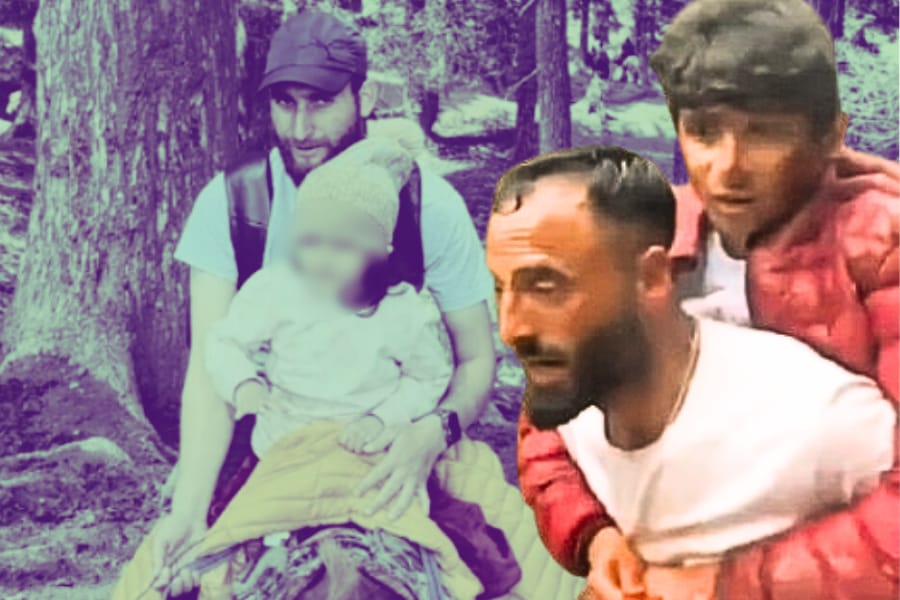|
|
| Evelyn Waugh (1903-1966) |
I recently read three European classics again, in quick succession — Conrad’s The Heart of Darkness, Kafka’s Metamorphosis and finally, Evelyn Waugh’s The Loved One. Each can be read in a single sleepless night, and each fills one with its own peculiar gloom. And all three novels are, in a very special sense, mad. At the end of Waugh’s novel, a profoundly bereft young Englishman sits next to the incinerator (which he is employed to operate) in an American cemetery for pets called the Happier Hunting Ground. His loved one (a human female), by an extraordinary turn of events, is in that roaring oven, and as he awaits her “final combustion”, he ponders his imminent return to England. He feels, at that moment, like “a favourite of Fortune”. Better people have perished on that alien strand, and among their bones he leaves just one thing behind, although he carries back a great deal more. “He was adding his bit to the wreckage, something that had long irked him, his young heart, and was carrying back instead the artist’s load, a great, shapeless chunk of experience; bearing it home to his ancient and comfortless shore; to work on it hard and long, for God knew how long.”
The greatness of all three books lies in this comfortlessness. Each confronts us with its particular horror, but provides no solace apart from the privilege of its own excellence as a work of art. I read somewhere of an Indian writer who has told the BBC that Indians do not read Waugh any more because they prefer to read their own authors. But Indians do carry on studying Conrad and Kafka with considerable enthusiasm. Perhaps the horrors on offer in these two writers are more easily assimilated into the post-colonial canon. The Conradian and the Kafkaesque are easier to label, historicize and teach, using the current methods of interpretation. But Waugh’s fiction, so effortlessly readable, with its inimitable mix of frivolity and grimness, of aristocratic fun and savage desolation, is usually condescended to by serious, often joyless, critics. He is considered best left to unprincipled hedonists like biographers and belletrists.
Contemporary criticism seems to have finally outgrown a literary sensibility, an interest in human beings (“history” is a different matter), and good English prose. Yet these ancient tools do remain the indispensable means of enjoying and interpreting Waugh’s achievements as a writer. Waugh and his generation of novelists, like Greene and Isherwood, were generally indifferent to or disdainful of academic critics, but respected intelligent, well-educated lay readers and reviewers, whereas today’s novelists often have an eye on or a foot in academia, relying on Eng Lit and Culture Studies for a steady supply of readers who would know, or could be told, what to look for in an “important” new novel. This incestuous complicity between academia and modern writing in English is what gives to each its much-coveted post-modern character.
Waugh was once asked in an interview whether he had a motive for writing. “It’s just my trade,” he replied, “And of course, the whole of English education when I was brought up was to produce prose writers, it was all we were taught, really.” He hated Stream of Consciousness, with its lush details of how a character was feeling. He thought that Gertrude Stein wrote “absolute gibberish”, and although Joyce began as a perfectly sane writer, one could actually “watch him going mad sentence by sentence” in Ulysses, to be finally hired by the Americans to write Finnegan’s Wake.
Evelyn Waugh was belligerently and congenitally pre-modern. From the Anglican service to Socialism and central heating, he deeply despised the modern world. This, and his splendidly misanthropic conviction about the vulgarity of happiness, were what his early readers and closest friends saw as the “point” of him, and loved him for. These qualities are given immortal expression in The Loved One, published in 1948 — the same year that Gandhi was shot and Eliot got the Nobel prize, that Norman Mailer wrote The Naked and the Dead and Camus The Plague, the year of the Kinsey report on sex and of the formation of NATO. Waugh calls his book “An Anglo-American Tragedy”, and thanks a Mrs Reginald Allen for correcting his American, and his friend, the novelist and reviewer, Cyril Connolly, for correcting his English. The novel is dedicated to Nancy Mitford, blue-blooded English mondaine, forgotten novelist and High Priestess of Fun. “It is dedicated to you,” Waugh wrote to her, “as the hardest hearted well no toughest in the world girl I know.” “Darling Evelyn,” she replied after devouring the book, “The heaven of The Loved One…I have been utterly shrieking ever since it arrived…& am now in despair at having finished it.”
The hard-hearted shrieks — Mitford also calls it “laughing from the stomach” — that The Loved One still elicits from its most sensitive readers are almost all at the expense of the Americans. Evelyn gloomily tolerated them as a possible source of frequently-needed economic replenishment; Nancy loathed them, and reserved for them her cruellest sense of comedy in the letters. (“Dined with a young American last night & told him your book was to be called The Loved One. ‘What a beautiful name’ he said. Poor him.”) In 1947, Waugh went to California for the first time, hoping to sign the contract for a film of Brideshead Revisited, but relinquished the fortune when he was told that the film would recast Charles and Julia’s relationship so as not to violate the Hays Code, which protects “the sanctity of the institution of marriage and the home”. While in California, Waugh visited the cemetery at Forest Lawn Memorial Park, and was enthralled by this vast and stupefyingly opulent display of American kitsch, unredeemed by even a whiff of a sense of its own sublime ridiculousness. Nearer our own time, John Denver sings about this cemetery in “Forest Lawn”, exactly capturing the combination of the bizarre, the macabre, the synthetic and the unintentionally droll which riveted Waugh: “My likeness cast in brass will stand in plastic glass/ While hidden weights and springs tip its hat to the mourners filing past.”
For Waugh, this great necropolis in the middle of the “impious 20th century”, offering “eternal salvation at an inclusive charge”, was not only a “first class anthropological puzzle”, but also “wonderful literary raw material”. It becomes Whispering Glades in The Loved One. Waugh’s protagonist, Dennis Barlow, poet, visits it for the first time to arrange the funeral of his English mentor, Sir Francis Hinsley, who has hanged himself for being sacked from his post as chief script-writer at Megalopolitan Pictures in Hollywood. Barlow explores the premises on a “languorous, odorous afternoon”, his senses in thrall and his “literary sense…alert, like a hunting hound”, like Spenser’s Guyon in Acrasia’s Bower of Bliss: “There was something in Whispering Glades that was necessary to him, that only he could find.”
It is here that Barlow runs into, and falls in love with, Aimée Thanatogenos, cosmetician at Whispering Glades, whose job it is to transform Death into what, though destined to perish, could only be called Art. Aimée is American innocence to Barlow’s European experience, but with a “rich glint of lunacy” in her remote eyes. She is also being wooed by the Senior Mortician, Mr Joyboy, Waugh’s great comic creation, who communicates his varied feelings for Aimée through the repertory of different smiles he creates on the faces of the dead before he sends them to her, to be made “more chic in death than ever before”.
But Dennis is a pariah in Whispering Glades because he works for a pet cemetery which looks up in awe to the splendours of Whispering Glades. (The Grade A service at Dennis’s cemetery includes a “card of remembrance” sent to the bereaved pet-owner on every death anniversary, which reads, “Your little Arthur is thinking of you in heaven today and wagging his tail”, suitably altered for different animals.) These two cemeteries, and outside them, Hollywood itself, with its bunch of failed Englishmen who hang out with Dennis, their faces blurred by “soft living and long boredom”, provide the surreally doomful setting for Dennis and Aimée’s “starched and jewelled courtship” — like Paola and Francesca in Inferno. But Dennis hides his job from Aimée, and this decides the fate of their love, leading eventually to her “final combustion” on the eve of his return to England.
The Loved One is driven by the moralist’s Shock and the artist’s Awe that Waugh felt in response to Forest Lawn, and what it embodies of the American Way of Death. Forest Lawn/Whispering Glades disallows “negros and Chinamen”; three years after Hiroshima, its buildings, made of “class A steel and concrete”, are proof against “nuclear fission”. Against this monstrously hygienic reversal of the body “turning to corruption”, Waugh and Barlow, with their memories of having fought in the war, pit their own appalled memento mori. “I dread four score and ten”, Waugh had said in his last interview, “The boredom of it, and being really old and really impotent and really poor, and a real bore. And nothing to do. Perhaps that’s why I rather hope war breaks out in the near future; then someone will drop a bomb on me and I shall be alright.”












